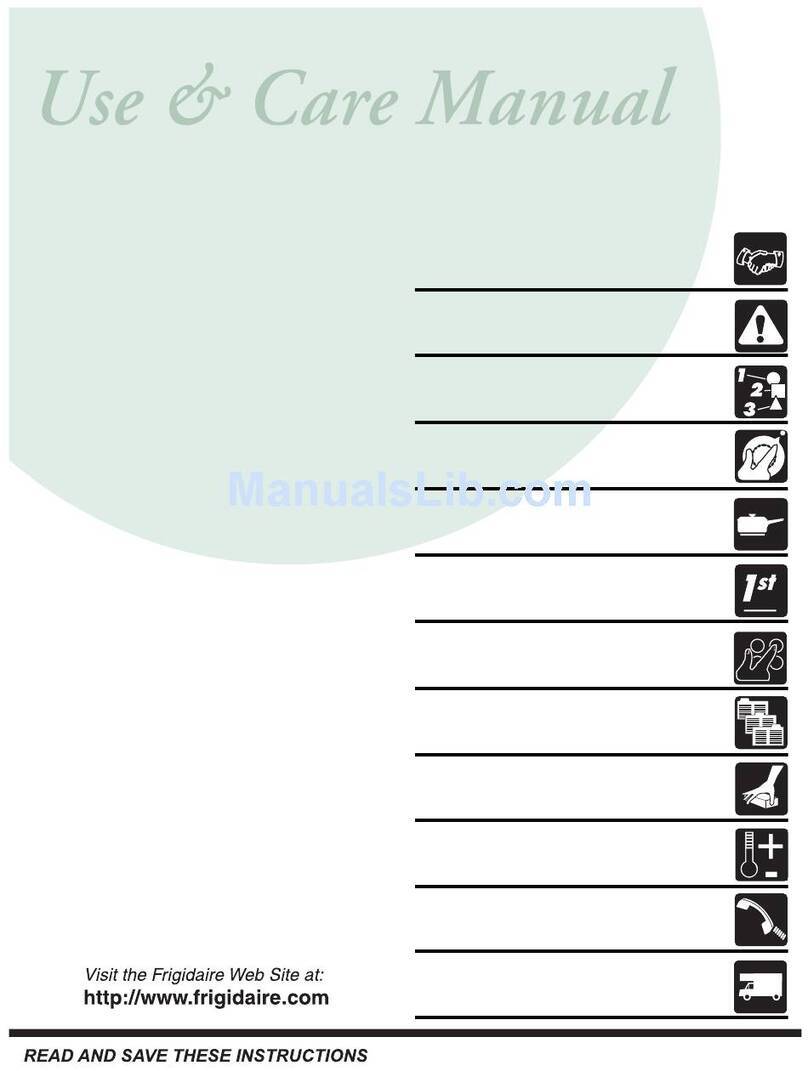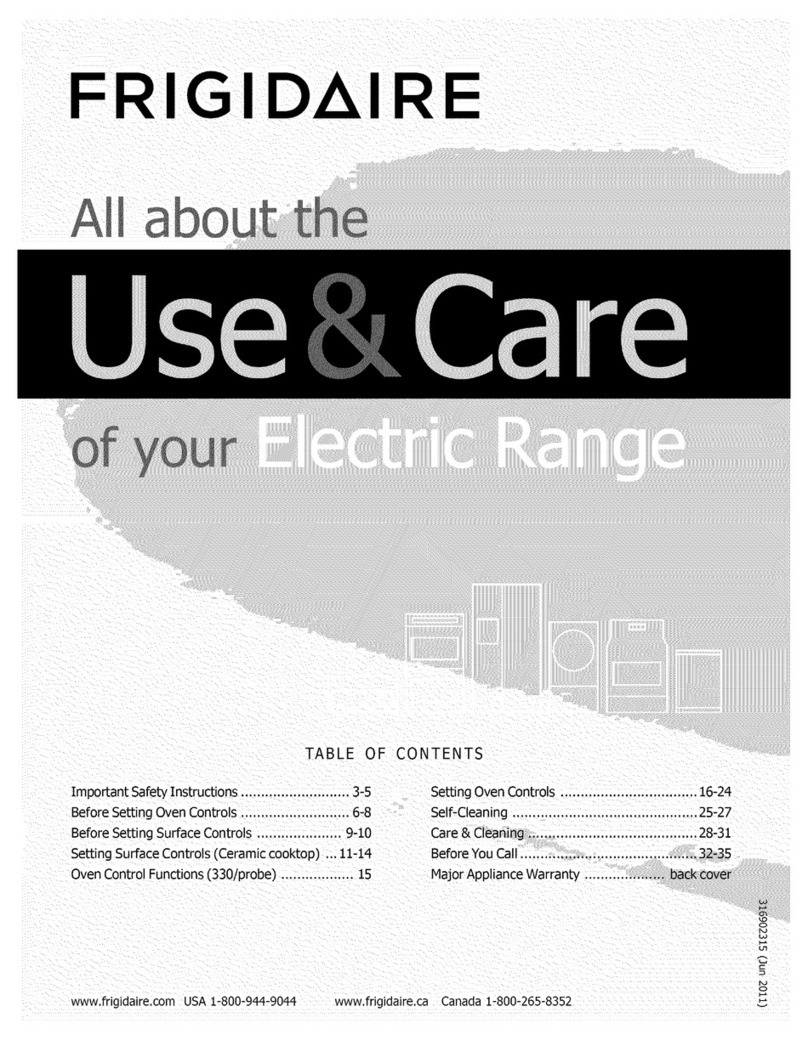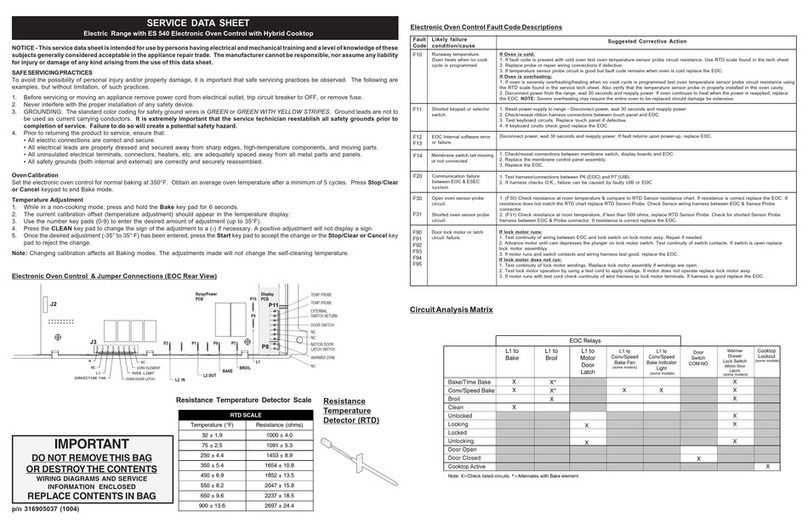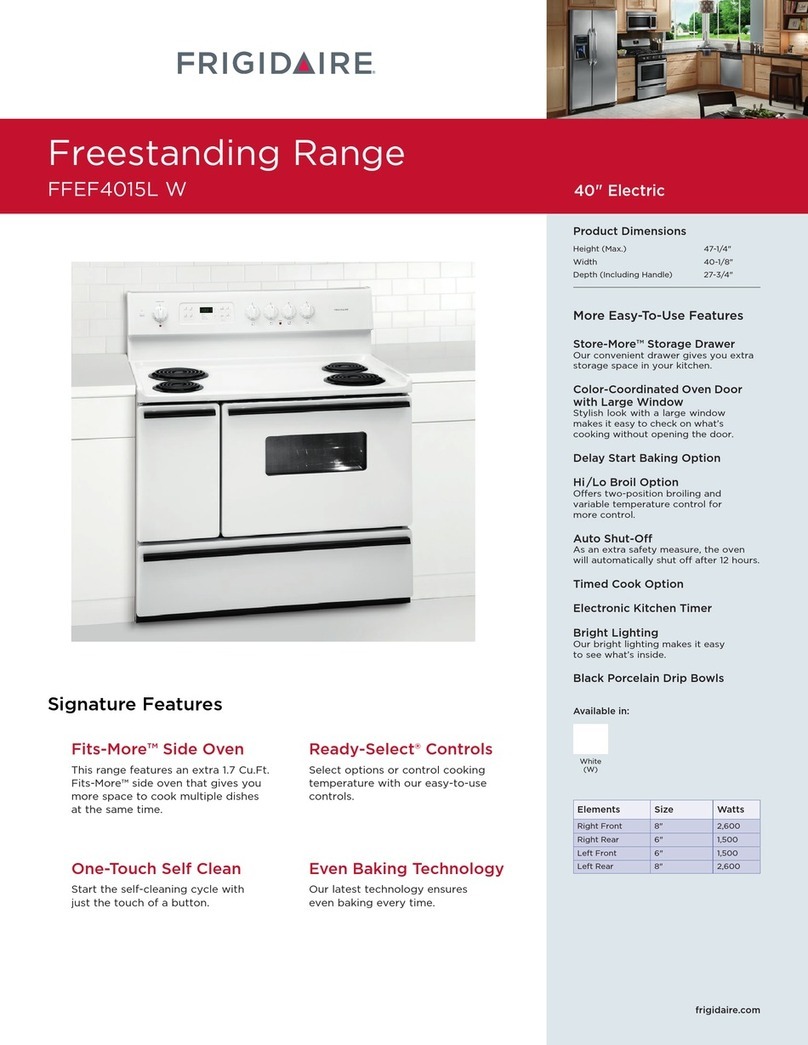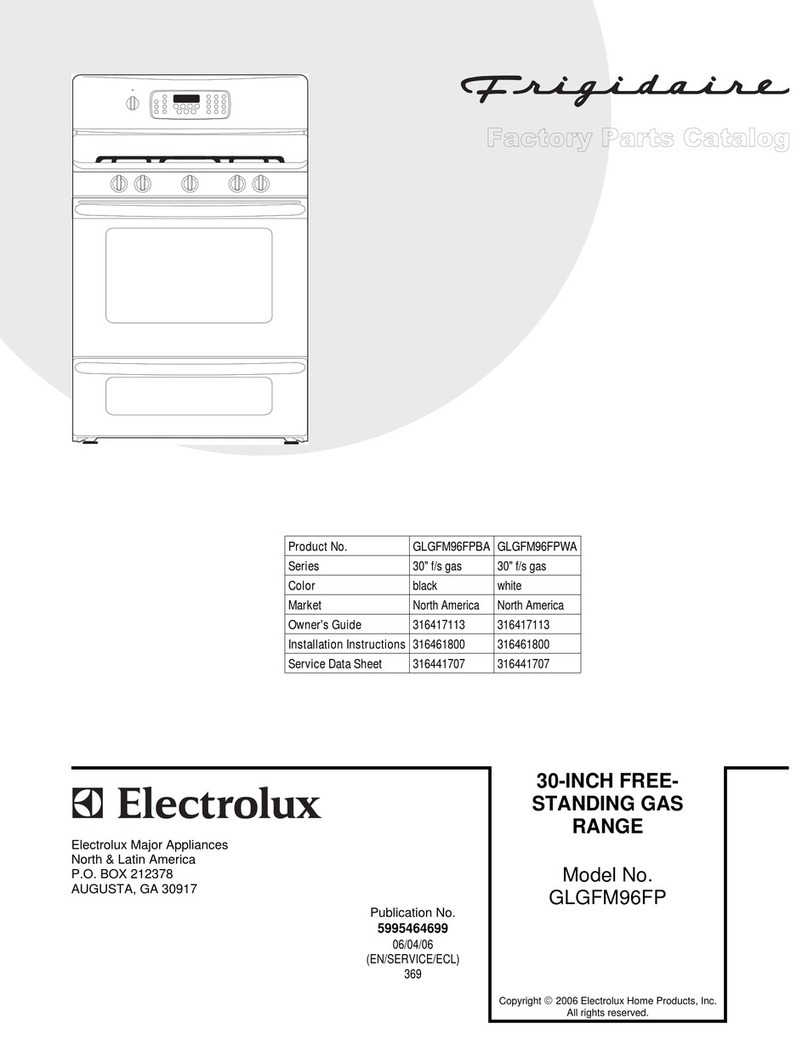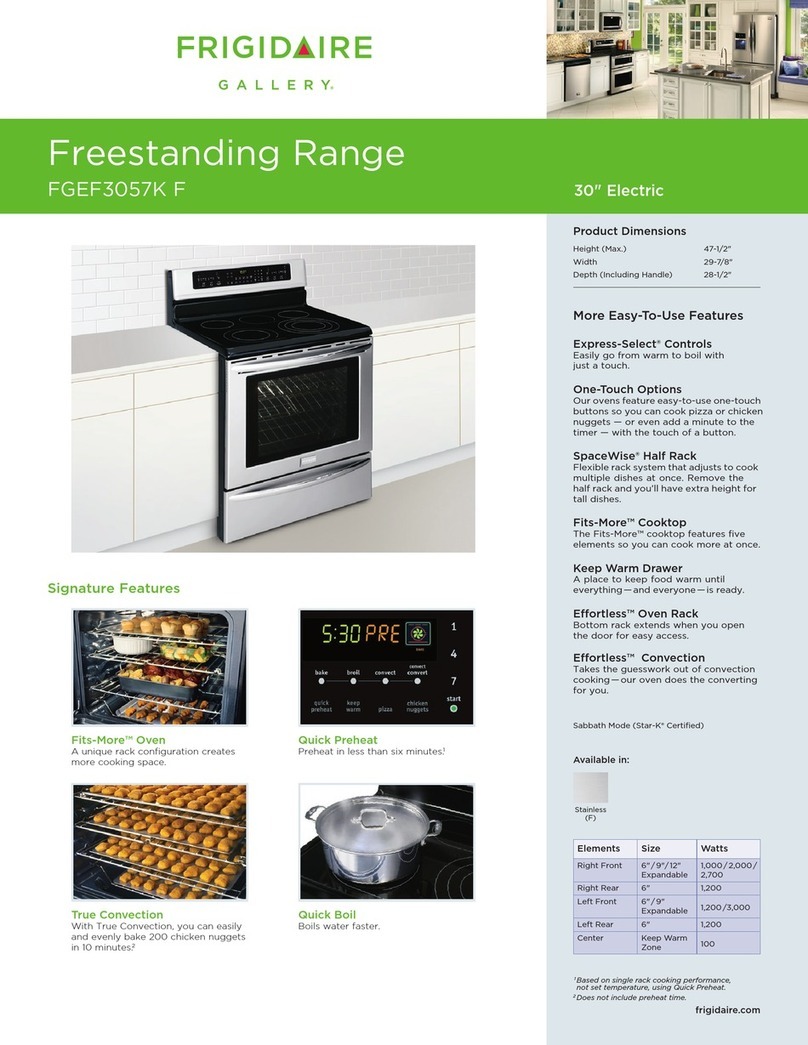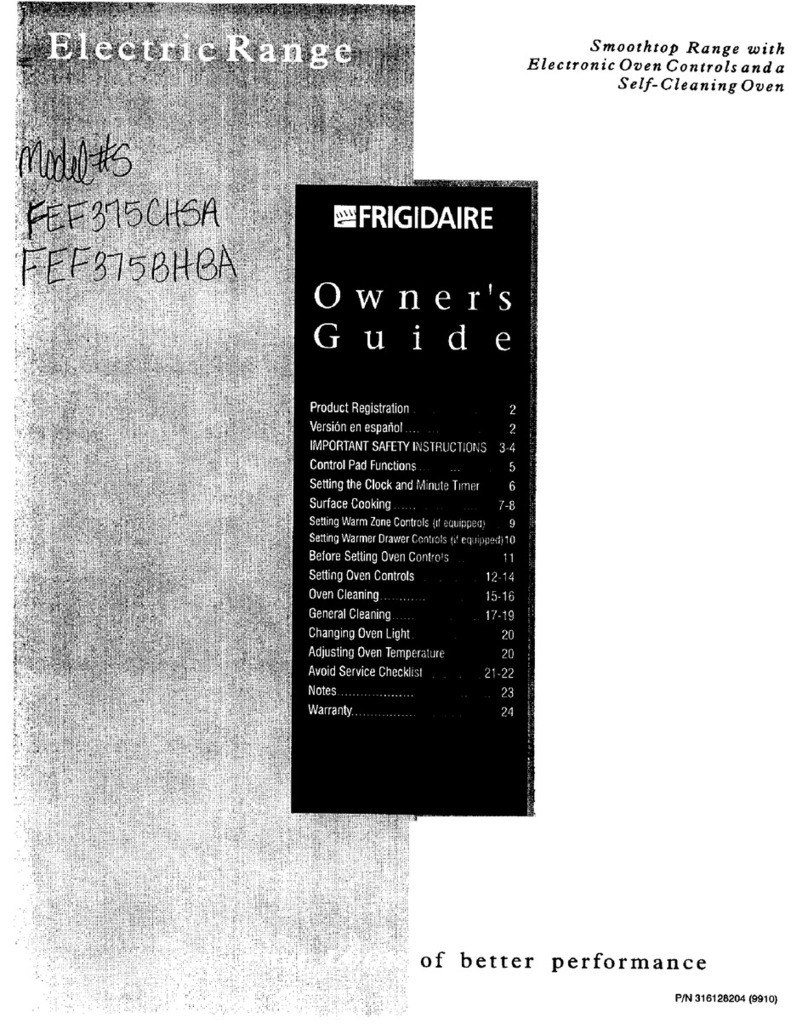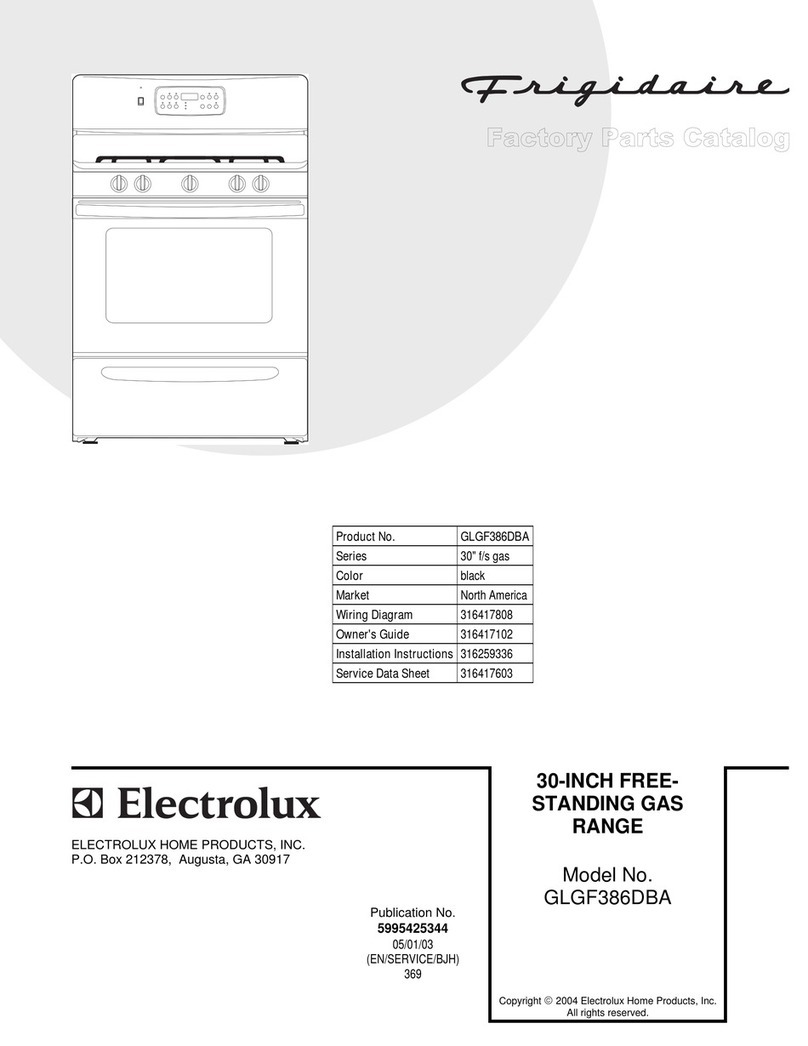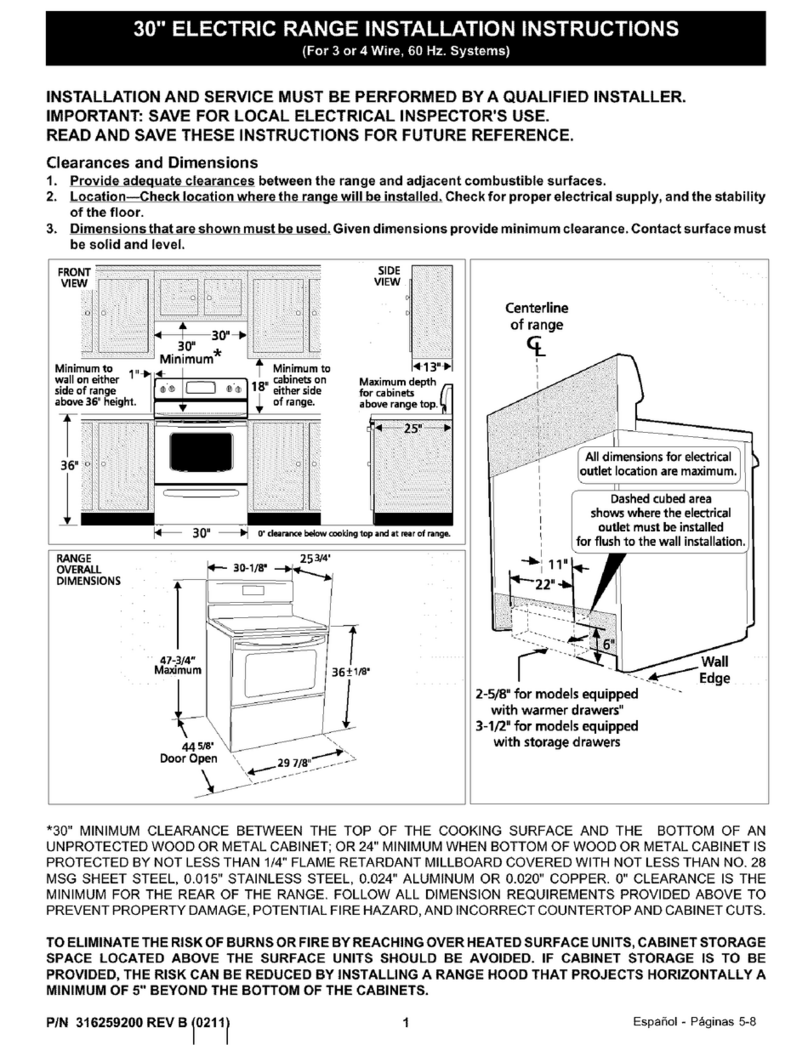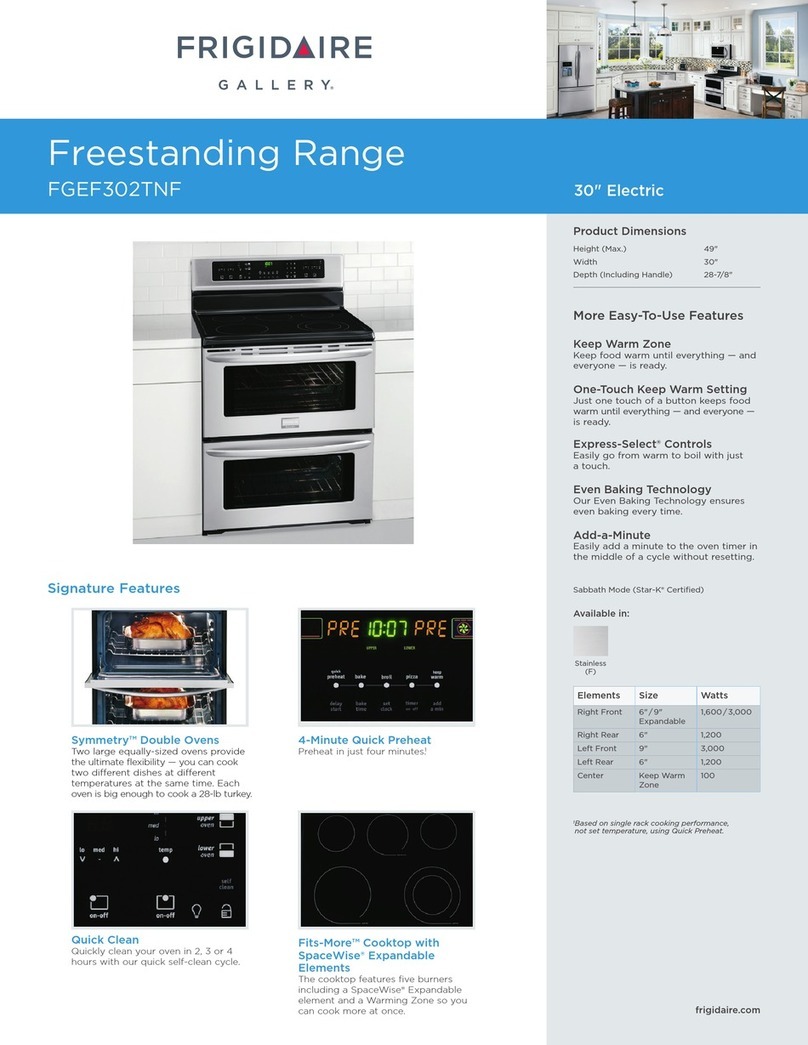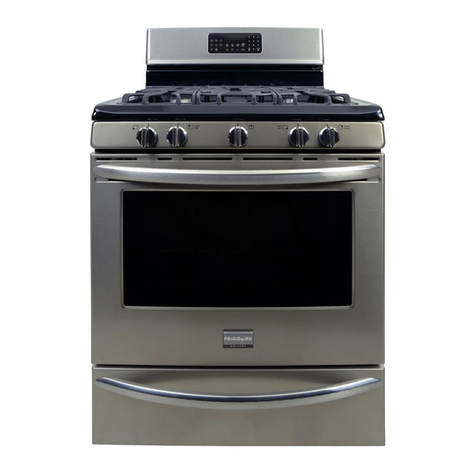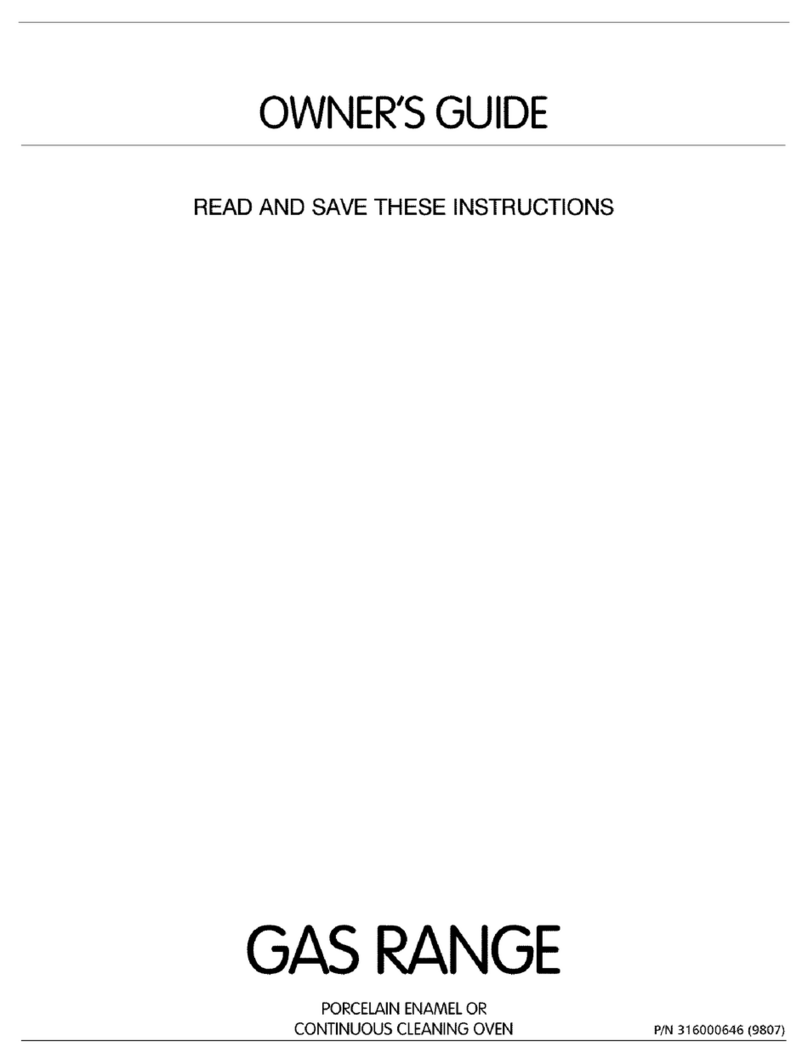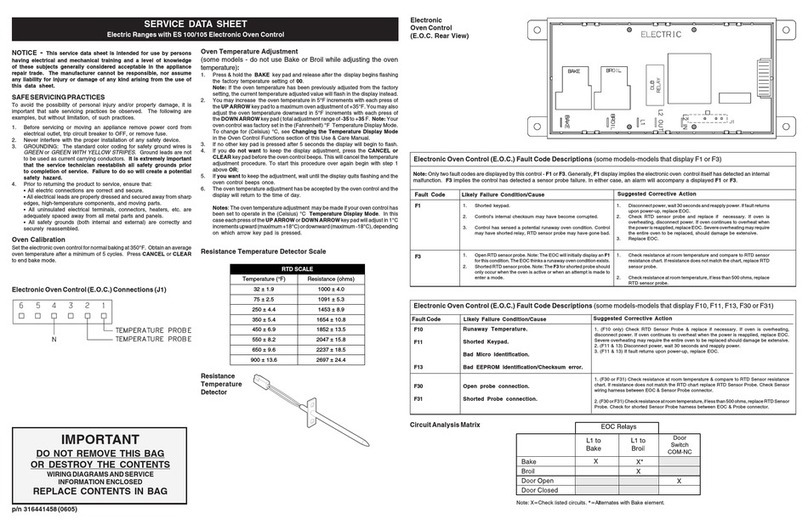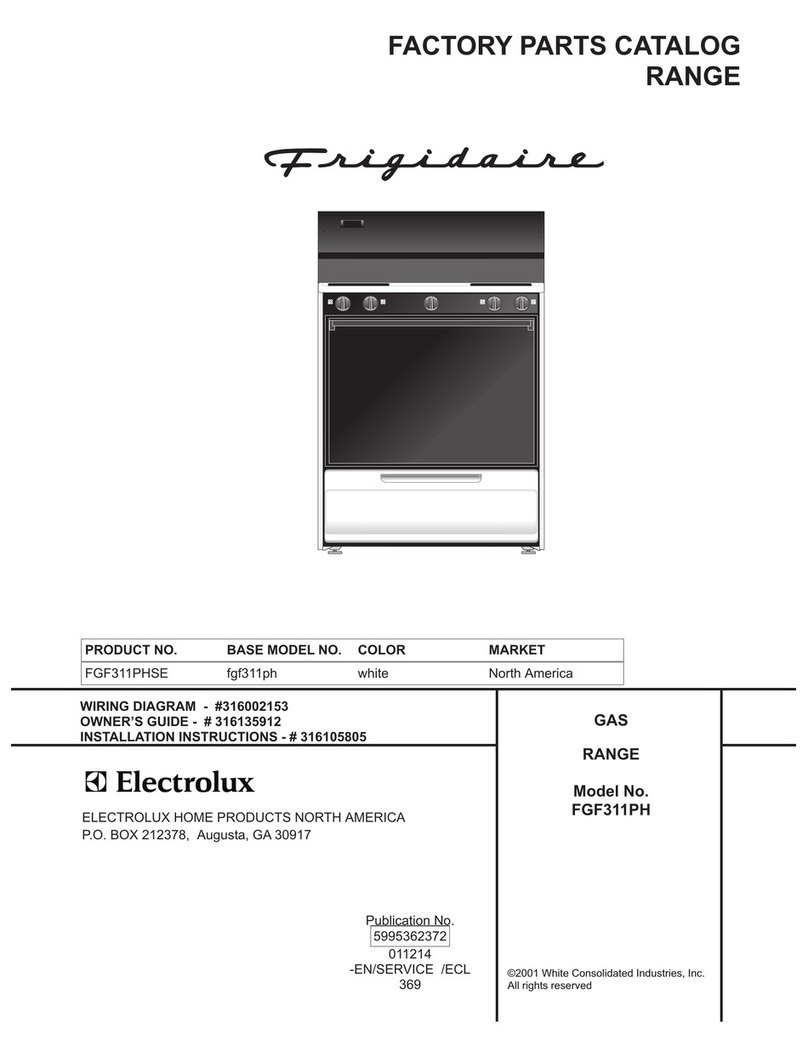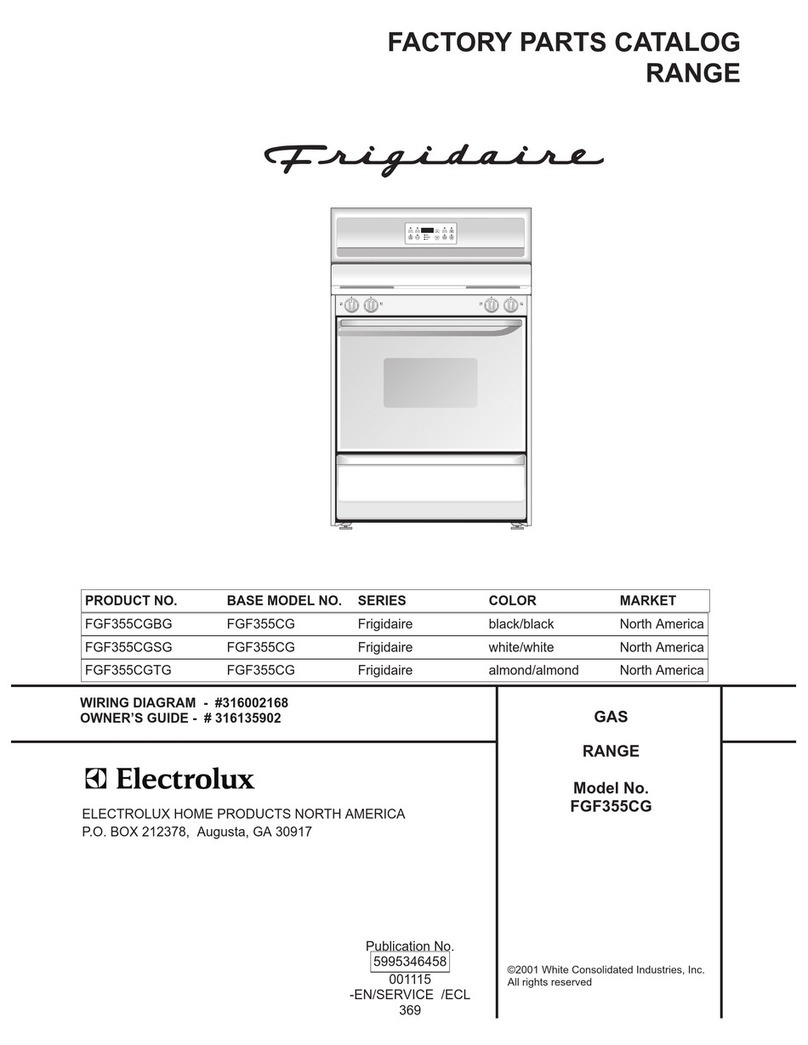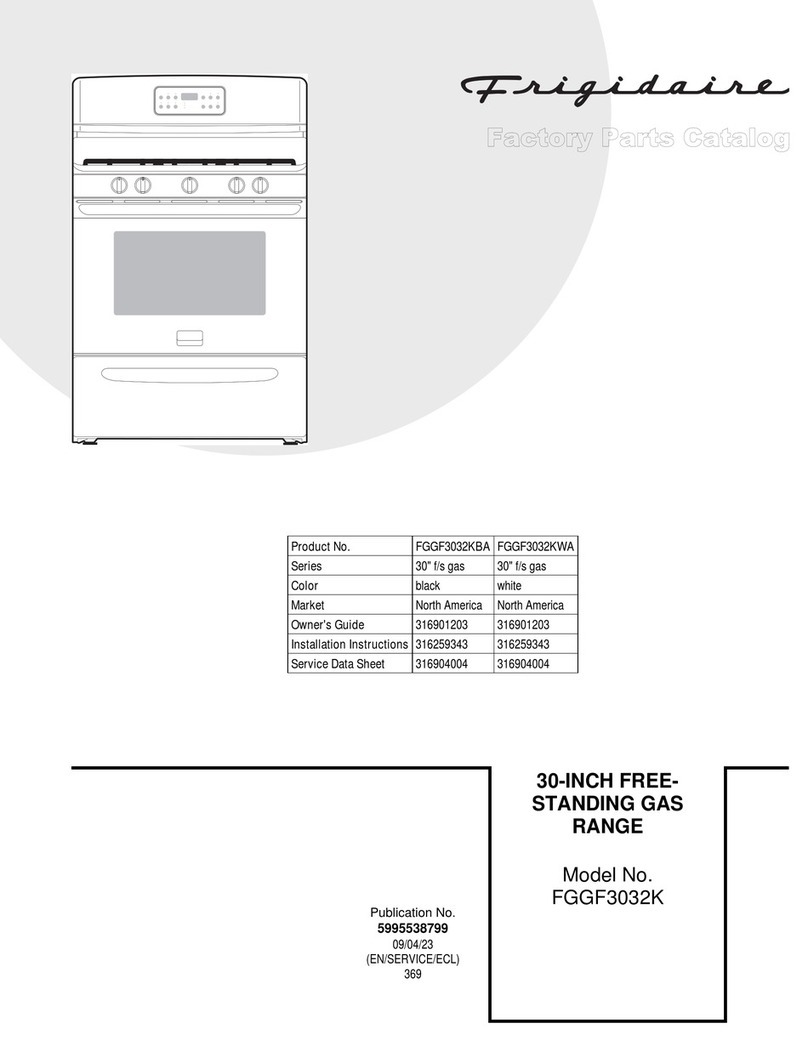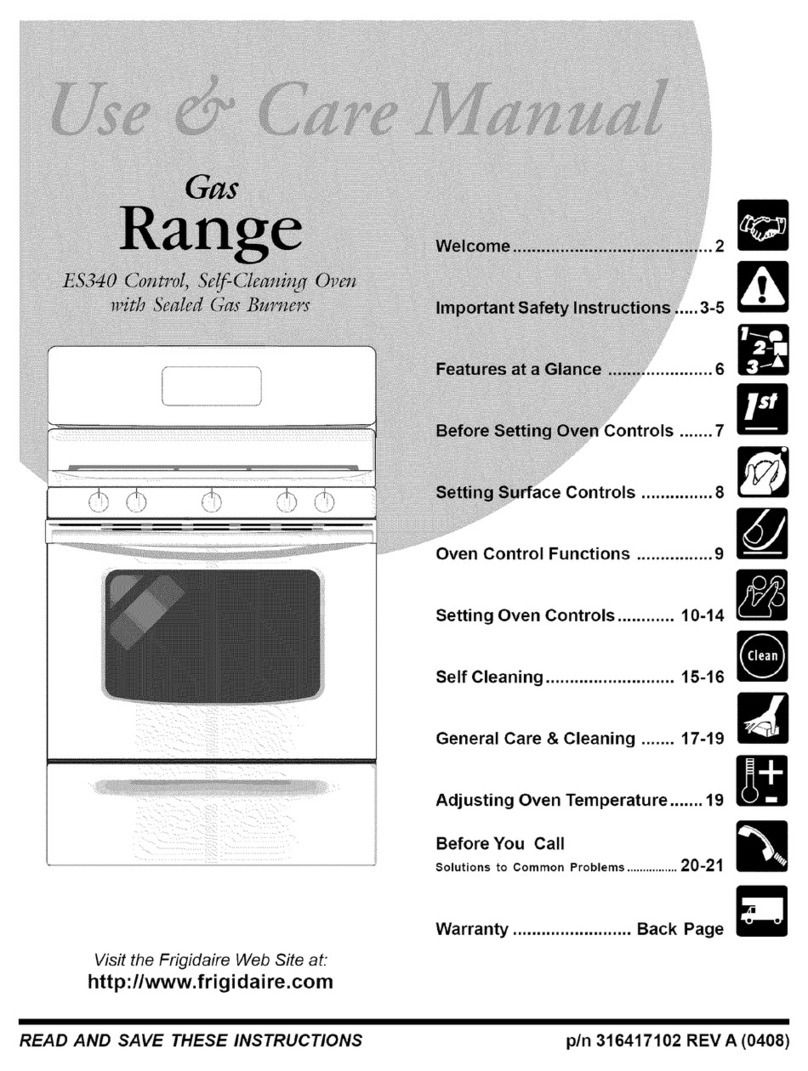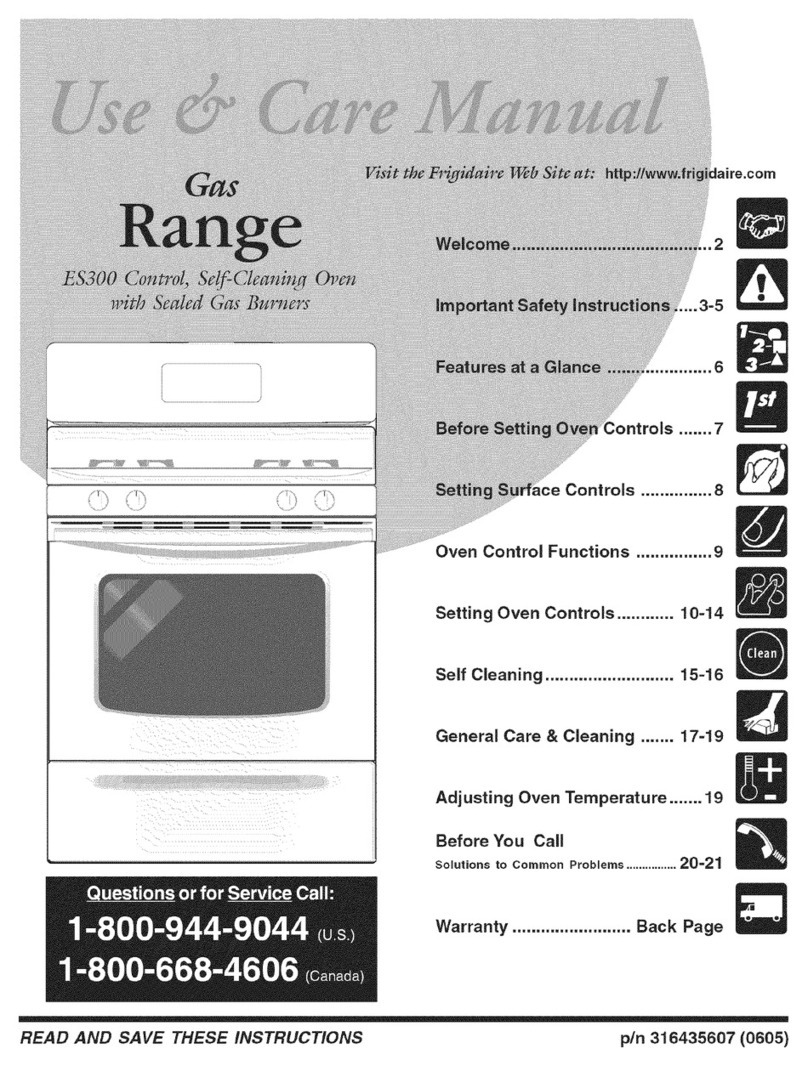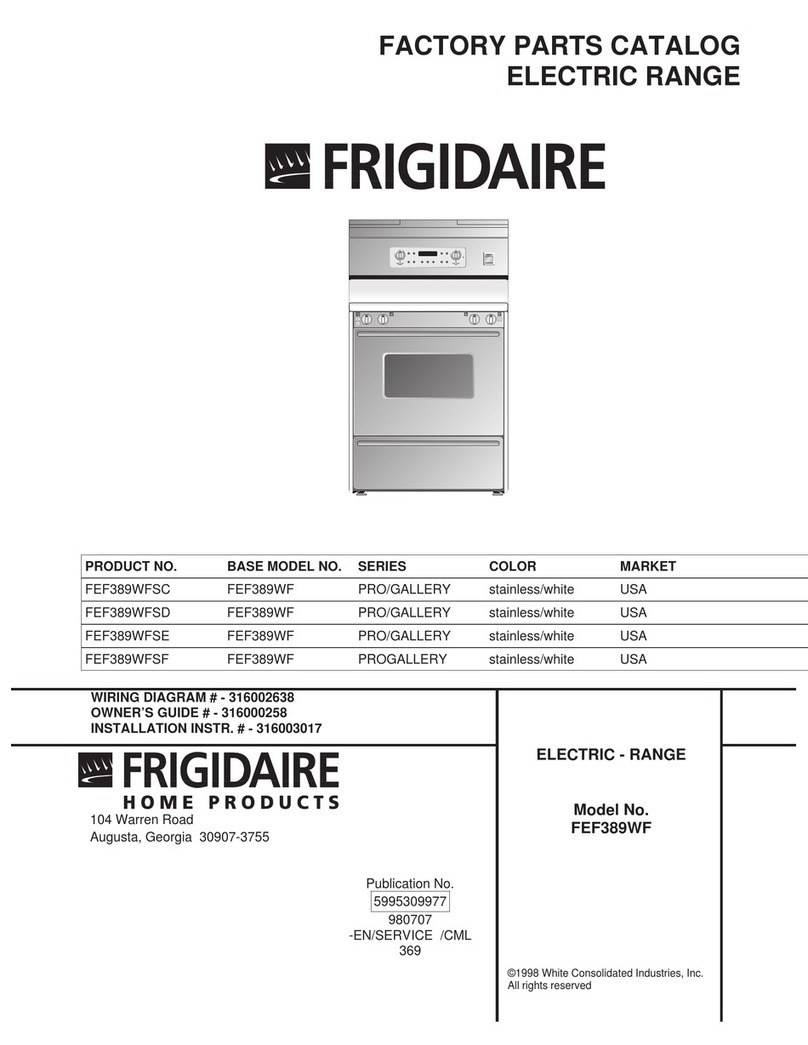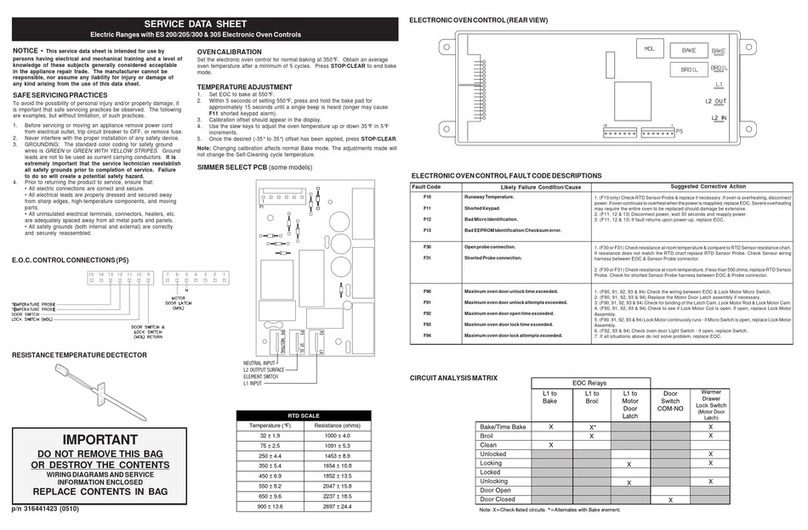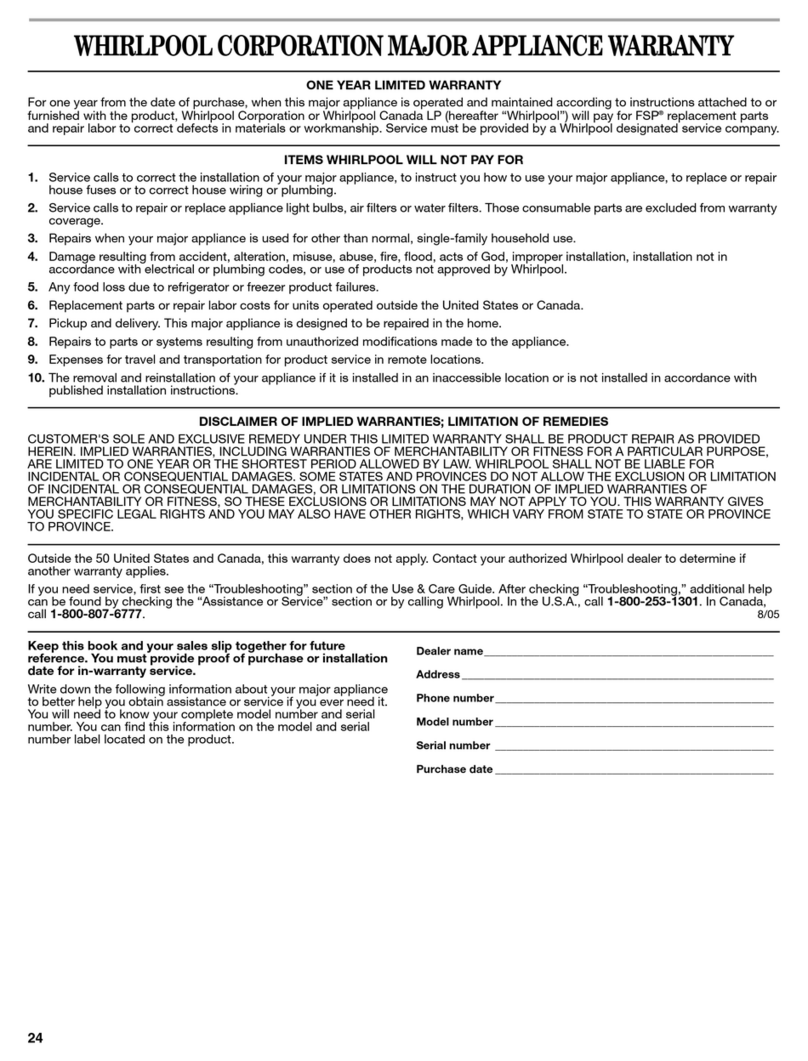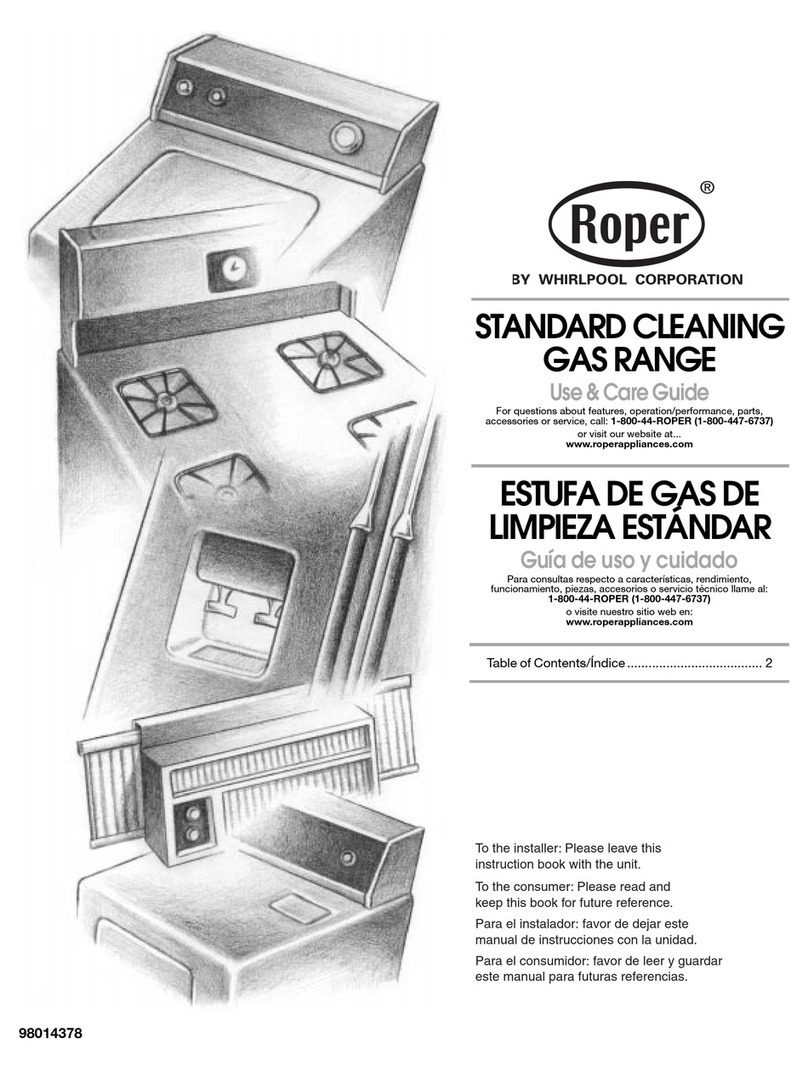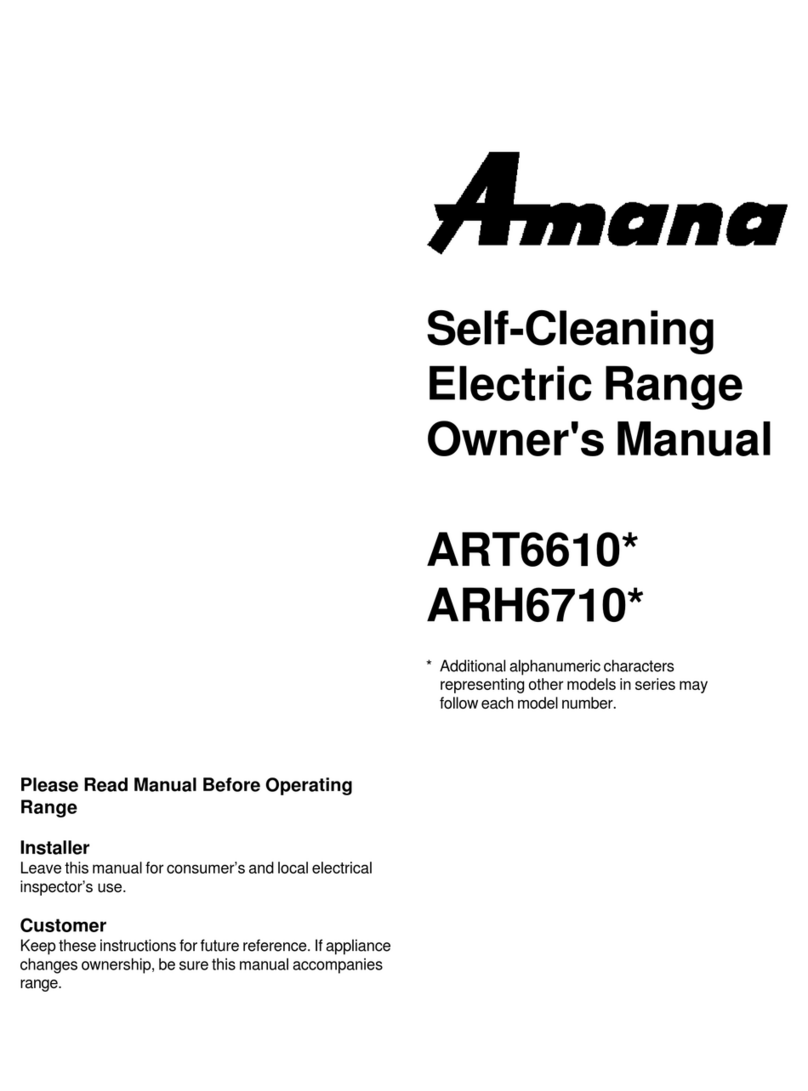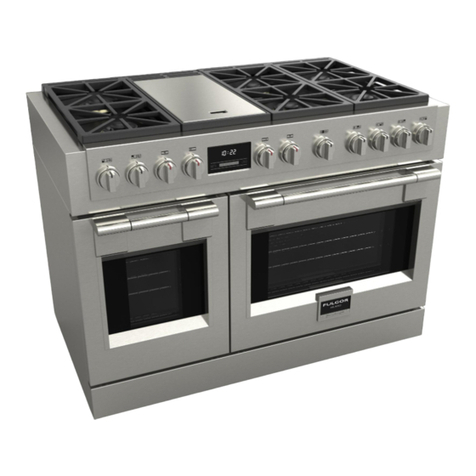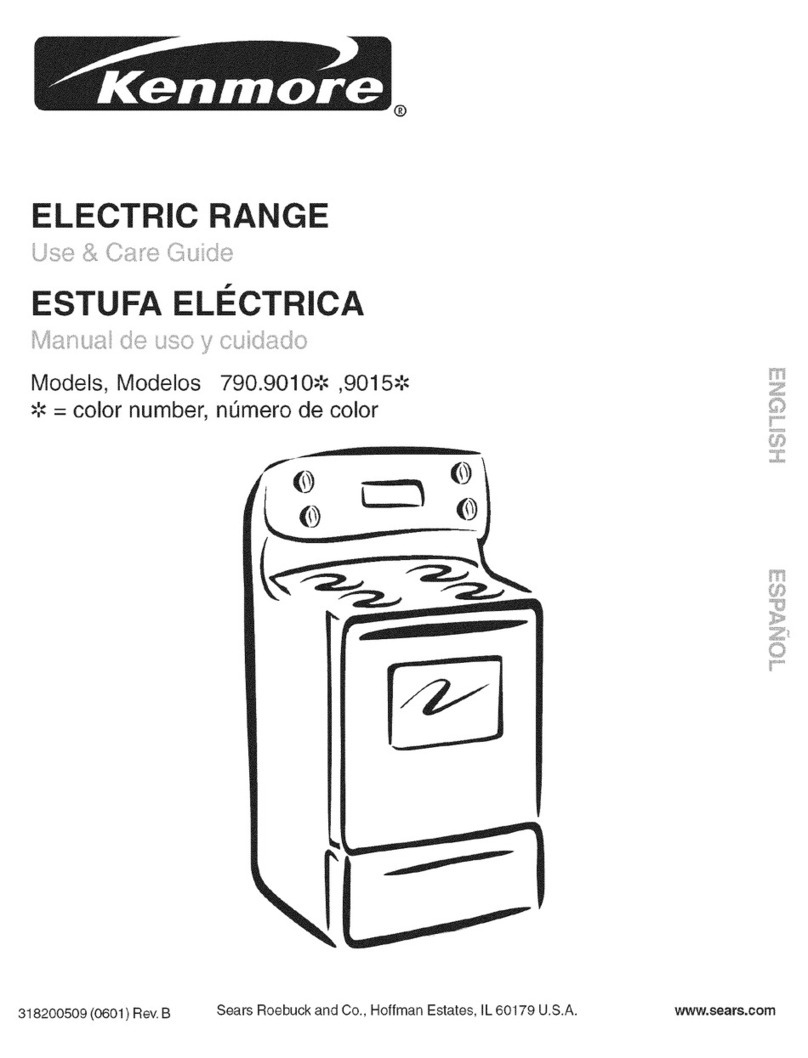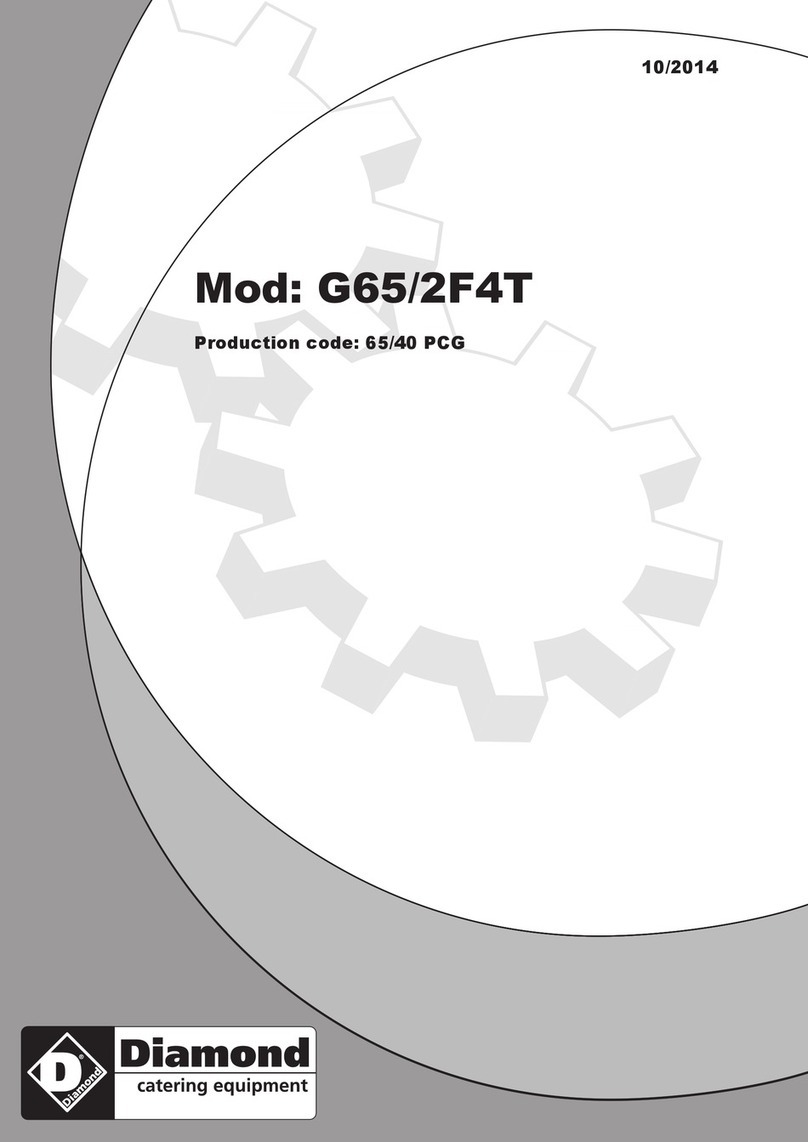
5
IMPORTANT SAFETY INSTRUCTIONS
IMPORTANT INSTRUCTIONS FOR USING
YOUR COOKTOP
unit. Always turn the knob to the LITE position when
igniting the burner. Visually check that burner has lit.
Then adjust the ame so it does not extend beyond
the edge of the utensil.
This appliance is equipped
with one or more surface units of different sizes. Select
utensils having at bottoms large enough to cover the
surface unit. The use of undersized utensils will expose
a portion of surface heating to direct contact and may
result in ignition of clothing. Proper relationship of
utensil to the surface will also improve efciency.
•
—To reduce
the risk of burns, ignition of ammable materials, and spillage
due to unintentional contact with the utensil.
•
Settings—Boilovers cause smoking and greasy spillovers
that may ignite, or a pan that has boiled dry may melt.
• —Do not use aluminum foil to line
oven bottom or any other part of the appliance. Only
use aluminum as recommended for baking if used as a
cover placed on the food. Any other used of protective
liners or aluminum foil may result in a risk of electric
shock or re or a short circuit.
• Glazed Cooking Utensils—Only certain types of glass,
glass/ceramic, ceramic, earthenware, or other glazed
utensils are suitable for cooktop service without breaking
due to the sudden change in temperature. Check the
manufacturer’s recommendations for cooktop use.
• If
a burner is accidentally turned on, the decorative cover
will become hot and possibly melt. Burns will occur if
the hot covers are touched. Damage may also be done
to the cooktop or burners because the covers may
cause overheating. Air will be blocked from the burner
and cause combustion problems.
FOR GLASS COOKTOPS ONLY
• —If
cooktop should break, cleaning solutions and spillovers
may penetrate the broken cooktop and create a risk of
electric shock. Contact a qualied technician immediately
• —If a wet sponge
or cloth is used to wipe spills on a hot cooking area,
be careful to avoid a steam burn. Some cleaners can
produce harmful fumes if applied to a hot surface.
•
glass—This cold cause glass to break.
IMPORTANT SAFETY INSTRUCTIONS FOR
USING YOUR OVEN
—Stand to the
side of the appliance when opening the door of a hot
oven. Let hot air or steam escape before you remove or
replace food in the oven.
Each oven
has its own vent located on the top, near each side
and towards the back of the cooktop. Touching the
surfaces in this area when the oven is operating may
cause severe burns. Also, do not place plastic or heat-
sensitive items on or near the oven vent. These items
could melt or ignite.
WARNING
materials such as aluminum foil. Doing so blocks
air ow through the oven and may cause carbon
monoxide poisoning. Aluminum foil linings may trap
heat, causing a re hazard.
Always place oven racks
in desired location while appliance is cool. Remove all
utensils from the rack before removing rack. If rack
must be moved while oven is hot, use extreme caution.
Use pot holders and grasp the rack with both hands to
reposition. Do not let pot holders contact the hot oven
element or interior of the oven.
• Broiler
pan and its grid allow dripping fat to drain and be kept
away from the high heat of the broiler.
•
with aluminum foil. Exposed fat and grease could
ignite.
•
cloth. Doing so could cause the bulb to break.
Disconnect the appliance or shut off the power to the
appliance before removing and replacing the bulb.
IMPORTANT SAFETY INSTRUCTIONS FOR
CLEANING YOUR OVEN
Exhaust fan
ventilation hoods and grease lters should be kept
clean. Do not allow grease to accumulate. Greasy
deposits in the fan could catch re. When you are
aming food under the hood, turn the fan ON. Refer to
the hood manufacturer’s instructions for cleaning.
—Always follow the manufacturer’s
recommended directions for use. Be aware that excess
residue from cleaners and aerosols may ignite causing
damage and/or injury.
